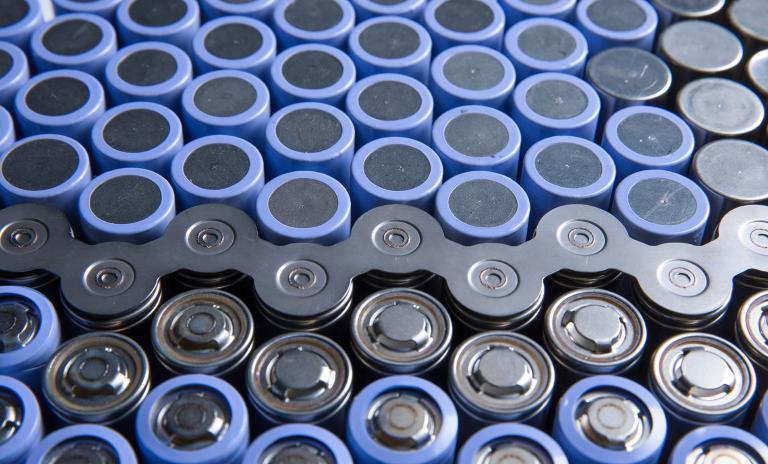Industrial Products & Services
Roland Berger advises companies on industrial goods and services, combining outstanding industry expertise and excellent technical know-how.


Production processes, and how to make them cleaner and more efficient, are the focus in this third in a series of articles covering the chapters in the Battery Monitor 2022 report, developed by the Production Engineering of E-Mobility Components (PEM) unit of RWTH Aachen University and Roland Berger. While production has matured considerably in Asia, European and the US players are advancing quickly, driven by innovations and the push for sustainability
Production processes are a key determinant of the costs, emissions and waste generated in the battery value chain . Asian companies dominate the landscape, with three Asia-based firms accounting for 70% of global battery sales. However, Europe and the US are leading the way in new technologies and a race is now on to develop cheaper, more sustainable production processes.
In this article, based on the Battery Production chapter of the Battery Monitor 2022 report, we outline the challenges and opportunities presented by new, more sustainable production processes, and what the innovations are. As in all chapters of the report, the article is based around the four key performance indicators of sustainability, technology performance, competitiveness and innovation power/strength. At the end of the article, we also look briefly at developments in vehicle battery performance, the theme of the short Product Performance chapter of the Battery Monitor 2022 report.
"The aim of sustainable production is to achieve and maintain certain standards in order to enable a sustainable economy for present and future generations."
Most CO2 emissions generated during the production of lithium-ion batteries (LIBs) emanate from the electricity used in drying processes, formation, and clean- and dry-rooms. The source of the power is therefore a critical factor in the emission of greenhouse gases. CO2 emissions from battery factories in Asia are roughly double those from factories in greener Europe, for example. As a result, emissions reduction through more energy efficient equipment and low-emission technologies is currently a major research focus.
Wastage is another key sustainability issue. Scrap rates in battery production are high, often around 30% when production starts. But the rate on well-established production lines can be reduced to 5-10% over time, as shown by the leading factories in Asia. Digitalization will help to reduce these figures further, especially as new plants in the US and Europe ramp up. Efforts are also underway to limit the consumption of hazardous materials, such as electrolytes, used in batteries. The full report looks at these issues in more detail.
The technology and plant type used in production determine a battery’s competitiveness; the faster and more precise the production, the more cost effective the battery. There are two key factors at play: cycle time, or the speed at which a battery can be produced, and overall equipment efficiency (OEE), which focuses on availability, performance and quality. Cycle time can only be increased if there is high process control, as in Asian factories, while OEE is determined by elements such as process optimization, degree of utilization and maintenance activities.
This makes both cycle time and OEE ideal KPIs to target for increased factory automation . Automated processes are generally less prone to errors than manual production, meaning automation is an important driver for further optimizing process steps, quality, yield and throughput. Gigafactories are a good example of the successful automation of individual processes, as outlined in the full report.
The market for production of battery cells and production equipment is dominated by Asian players, who excel with their cost leadership. However, many high-quality process technologies are emerging in Europe, driven by the boom in electric mobility and stricter European Union regulations for green batteries. Indeed, investment in battery production facilities in Europe is now double that in Asia. Economies of scale are a key goal, with production equipment investment costs closely linked to cell costs, as referenced in the full report.
In Europe, there are numerous specialists in plant engineering with extensive know-how in process technologies. They have become leading suppliers of specialized production equipment for individual processes. From the battery cell manufacturers’ point of view, however, there is a desire for turnkey suppliers, which are currently mainly Asian companies.
"Automation is an important driver for further optimizing process steps, quality, yield and throughput."
Asia is still the home of battery manufacturing innovations, with the continent accounting for 70% of battery production patents in the past few years. But again, the US and Europe are catching up.
R&D efforts are currently focused on the production of a “green battery”, using solutions such as laser drying, micro-environments to downsize energy-intensive clean and dry rooms. Vast investment costs in formation and aging can also be reduced by data-based charging and conditioning cycles, leading to faster and shorter formation processes.
While innovation in Asia is driven by radical investments, the American innovation culture is characterized by agility and a vast network of start-ups. European equipment manufacturers, meanwhile, are focusing more on collaborations. All of these innovation factors are discussed in more detail in the full report.
Globally, there has been a strong increase in the technology performance of vehicle batteries due to the steady increase in energy densities. The energy density of LiBs has increased more than eightfold in the period to 2020, while their (production) cost has fallen by an eighth – not taking account recent raw material price developments.
A similar increase can be found in the warranty performance of vehicle batteries. Warranty periods of eight years are now common in China, the US and Europe, with guaranteed performance set to continue to rise. Even today, the technically possible life cycle of the battery is now longer than the vehicle service life.
China continues to dominate when it comes to new models, with 91 electric vehicles on offer in 2019. The country is also way out in front when it comes to research into LIBs. Between 1971 and 2021, Chinese researchers published 57% of all publications related to LIBs, with the US a distant second at 20%. More details on product performance are in the full report.
Register now to download the full BATTERY MONITOR 2022 - the value chain in the field of tension between economy and ecology - including key insights and latest developments regarding the current market situation for players in the battery industry. Additionally, you get regular insights into electronics topics.
